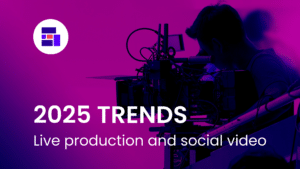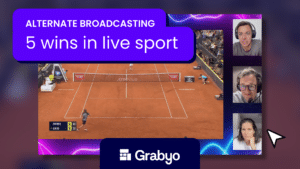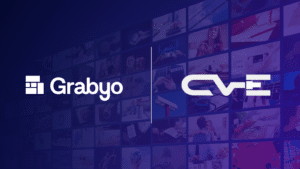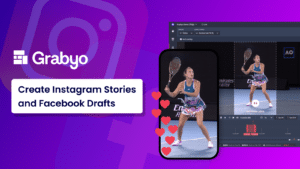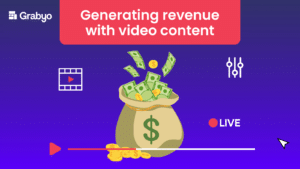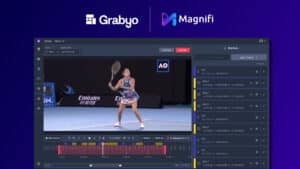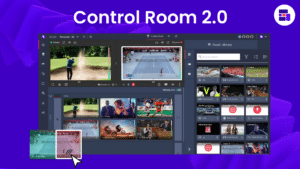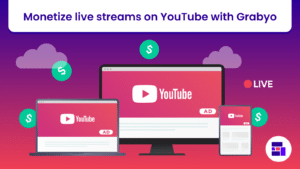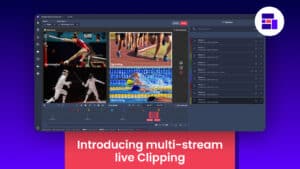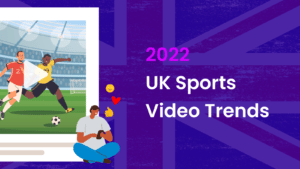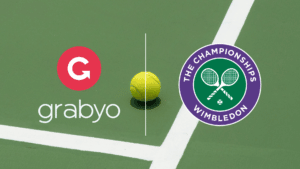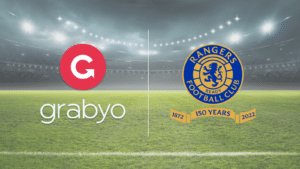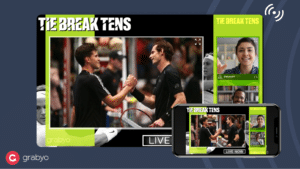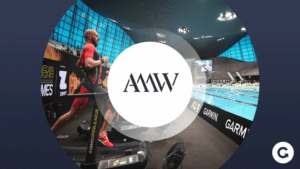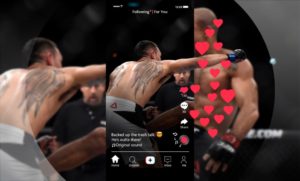
Euro 2024 in review
A new era of football broadcasting and digital experience
Technological advancements shaping the future of sport
Our summer of sport analysis continues, and this time we’re looking at the Men’s European Football Championships – the Euros. It was a disappointing night in Berlin for England, who fell at the final hurdle to a well-deserved Spain squad.
This year, the tournament showcased several new technical innovations on the pitch, such as Semi-Automated Offside Technology (SAOT) and connected ball technology, which helped speed up gameplay and reduce scrutiny on referee decisions. However, the real game-changers were the advancements behind the scenes and off the pitch for broadcasters, and on digital screens.
While traditional TV viewership remained significant this year, younger audiences are increasingly tuning in via digital channels, accounting for 32% of the total audience. This tournament also saw more broadcasters adjusting their tactics to address mobile viewing and second screen audiences, with vertical formats becoming a staple for major media organizations, including BBC Sport.
So, where do we go from here? What exciting lessons can broadcasters, teams, and rights holders take from this tournament to implement and refine across the sporting calendar moving forward?
Social media savviness becomes a must
Social media has become a staple of many sports organizations’ digital strategies, and this year’s tournament was no different. The official Euros channels on TikTok, Instagram, Facebook, X, and WhatsApp added over 14 million new followers since the start of the championship, accumulating 335 million engagements and 2.8 billion video views.
This further underpins the continued changing momentum of consumption habits among younger audiences. Specifically, 42% of those aged 16 to 24 are placing less emphasis on watching the live 90-minute game. But what exactly is the alternative? It’s not that fans don’t care about what’s happening during the tournament; they are simply engaging more readily across digital and social platforms. This includes dedicated clips and highlights of the game as they happen, shoulder programming, behind-the-scenes content, and live updates. Through live tweeting during matches, Instagram Stories, and Facebook Lives, the digital experience becomes more enticing, interactive, and engaging for fans.
This evolution in viewing habits complements rather than detracts from the live game. The latest iteration of the Euros underscores the increasing diversity of audiences in recent years. Sports organizations can enhance their live content strategies to engage fans across diverse communities. This could involve integrating features like live trivia, prediction games, and real-time polls to deepen viewer engagement and foster a more immersive experience.
Vertical video and mobile-first content on the rise
With the rise of social media and mobile consumption, it shouldn’t come as any surprise that vertical video formats have become more prevalent. Platforms like TikTok, Instagram, and even traditional broadcasters are creating content specifically designed for vertical viewing.
It seems only fitting that one of the earliest adopters of vertical formats in programming was in the host nation of Germany in the DFL, with early tests dating back to 2019. Many broadcasters have since followed suit, and the latest tournament has only fuelled the fire for rights holders trying to keep pace with consumption shifts, and shows little sign of slowing down. The next step is how can organisations best replicate the monetization models we’ve become so accustomed to on horizontal formats. But we’ll come onto that a bit later!

Creating vertical video, without the hassle
Despite the production challenges of vertical video, the rapid growth of mobile devices and the benefits of vertical viewing make this format impossible to ignore. Discover how easy it is with Grabyo.
Interestingly, the European Championships were among a number of events starting a downward trend of capturing content in HD HDR rather than 4K UHD, highlighting a significant gap between producers and consumers. Ursula Romero, Executive Producer at International Sports Broadcasting (ISB), noted that “everything revolves around social networks and younger audiences,” emphasizing that a large proportion of these viewers prioritize the timeliness of content on their preferred channels over the production quality.
Playing on the second screen experience
Fans are not only engaging with vertical formats but also using their phones and tablets alongside live game broadcasts on television. In fact, it’s estimated that up to 80% of sports fans engage in this activity, allowing them to react and comment on the game with fellow fans while searching for related information and updates.
For rights holders and brands, this presents a significant opportunity to join the conversation and a lucrative avenue for monetization. Capturing key moments as they happen to ensure they’re first to the conversation is just the beginning. By going one step further and creating alternative broadcasts and shoulder programming, such as hosting watch-alongs with on-air talent to guide the discussion and providing localized commentary for geographically dispersed fans, are effective ways to optimize second screen engagement.
The FA’s Lion’s Den allows England fans to receive more live access than ever before
“The challenge from a live perspective, was encouraging live feedback from the audience and making them feel part of the show. One of the biggest things we’ve done technically to fulfil our key objective of linking fans with players is doing FaceTime calls during live shows. Anyone can phone into the show and talk live to an England player or on-screen talent”
While the second screen experience may reflect ever-shortening attention spans among fans, it also presents both a challenge and an opportunity for advertisers. The challenge lies in potentially not having the viewer’s full attention, as their secondary activities may be unrelated to the primary broadcast. However, Heineken’s 182% increase in CTR for contextualized ads during the previous Euros tournament demonstrates the potential of this approach. For rights holders, teams, and broadcasters, creating compelling content associated with the game and opening this up to sponsors can be highly beneficial.
Show me the money!
Securing broadcast rights for major tournaments can be a significant gamble for terrestrial channels. Take ITV, for example, who took a bold stance by banking on England’s potential to reach the semi-finals—a decision that ultimately paid off handsomely. The ad revenue generated during these broadcasts can soar to remarkable heights, showcasing the immense financial potential of such events.
Broadcasters and rights holders have ample room to expand their revenue streams. Digital platforms offer unique advantages, including the ability to deliver interactive and targeted advertisements. Viewers can engage with ads, receive real-time offers, and even make purchases directly from their screens, creating a highly engaging ad experience.
— INCLUDE AN IMAGE AND LINK THROUGH TO NEW MONETIZATION PIECE I’LL BE CREATING —
In fact, digital advertising not only enhances viewer interaction but also provides broadcasters with valuable data insights that can further optimize ad targeting and campaign effectiveness. By leveraging these capabilities, broadcasters can unlock new revenue potentials and elevate the overall viewer experience across both traditional and digital channels.
Creating more choice via enhanced live streaming
As consumer choice continues to evolve, broadcasters are enhancing live streaming experiences with unprecedented options. During the tournament, viewers could select their preferred camera angles, allowing them to personalize their game-watching experience. Some broadcasters went even further by offering features that provide access to specific player stats and the ability to switch between commentary in different languages.
Leading up to the tournament, AMDOCs anticipated the following innovations:
- Almost a third (29%) of UK football fans expressed interest in watching a Euro 2024 match using virtual reality (VR) technology.
- Other tech that UK fans would like to try to enhance the matchday experience include a 360-degree, user-controlled view of the match (24%), and augmented reality (AR) experiences, such as adding another layer of information like player profiles (18%)
While the Euros set a very high bar for these innovations, they are by no means out of reach for other sports, regardless of their size. Traditionally, such technology was costly and complex, requiring substantial resources and expertise, with the Euros sparing no expense to implement these features. However, advancements in cloud-based solutions have democratized these capabilities, making them accessible to organizations of all sizes. The Euros is only the beginning, setting a new standard for what’s possible.
Lessons for the future
The Euros 2024 showcased key innovations that broadcasters, teams and rights holders can leverage across the sporting calendar. The rise of mobile-first content, enhanced second screen experiences, high-quality live streaming, geo-targeted content, and interactive advertising are re-shaping sports broadcasting.
While it might not be coming home for England just yet, Euro 2024 has set a new benchmark. The tournament demonstrated the potential of integrating advanced technology and innovative digital strategies to create a more engaging and immersive experience for fans, as well as lucrative opportunities for broadcasters and rights holders.




